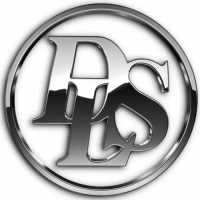Getting Started
Page 5
2. ISDN BACKGROUND
The Integrated Services Digital Network (ISDN) emerged in the late 1970's as a means
of integrating different information streams, and re-implementing the analog network at
that time into a digital transmission scheme. This development was a result of the
demand from corporate users. The ISDN concept materialized when the CCITT (The
International Telephone and Telegraph Consultative Committee) employed the concept
and started developing a set of standards for a universal Integrated Services Digital
Network.
ISDN has a very broad specification which includes Primary Rate (1.544 Mbps
composed of 23 x 64 kbit/sec. B channels plus 1 x 64 kbit/sec. D channel in N. America,
or 2.048 Mbps composed of 30 B channels plus 1 D channel in Europe), Basic Rate ( 2 x
64kbit/sec. B channels plus 1 x 16kbit/sec. D channel ), and Broadband ( video / data /
voice in various configurations ). Primary Rate requires a 1.544 Mbit/sec. connection for
its 24 channels (or 2.048 Mbit/sec. for 31 channels in Europe), and is meant for users
who require high-speed communications (e.g. Local Area Network). Basic Rate requires
a 144 kbit/sec.* connection for its three channels, and is meant for most end users.
Broadband can achieve transfer rates of 150 Mbit/sec, and is meant to integrate with the
broadband capability of fibre optics. The distribution of the ISDN signals is complex, as
they are being carried by the existing network. For the purposes of this manual, we will
concentrate on the distribution of ISDN signals at the basic rate from the central office
to the end user site.
* Depending on the interfaces, the total bit rate will be different. For the U-interface, the
total will be 160 kbps; for S/T interface, it will be 192 kbps.
2.1 The ISDN U-Interface
To and from the central office, basic rate ISDN signals are sent via the 2-Wire twisted
copper pair known as the U-Interface. These bi-directional 160 kbps (i.e. 144 kbps with
16 kbps overhead) signals are coded as either a 2B1Q signal, or a 4B3T signal
depending on the administration. The DLS 50 is especially suited to simulate line

